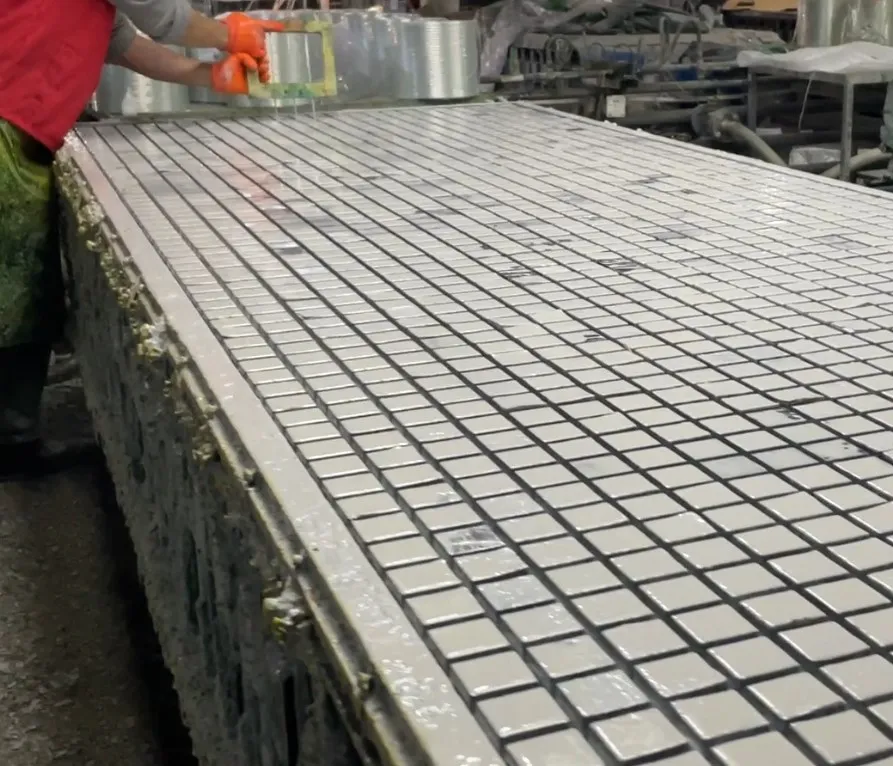loading...
- No. 9, Xingyuan South Street, Dongwaihuan Road, Zaoqiang County, Hengshui, Hebei, China
- admin@zjcomposites.com
- +86 15097380338
- Welcome to visit our website!
Exploring the Benefits of FRP Materials in Bridge Deck Construction and Design
The Advantages of Using FRP for Bridge Decks
Fiber Reinforced Polymer (FRP) has emerged as a leading material for innovative engineering solutions, particularly in the construction and rehabilitation of bridge decks. With its unique combination of properties, FRP is transforming the landscape of civil engineering and offering a host of benefits over traditional materials like concrete and steel. In this article, we will explore the advantages of using FRP in bridge deck applications, addressing efficiency, durability, and sustainability.
Lightweight Properties
One of the most significant advantages of FRP materials is their lightweight nature. Compared to traditional concrete or steel, FRP is much lighter, which leads to easier handling and installation. The reduced weight of the FRP bridge deck can significantly lower transportation costs and the overall load on bridge supports. This is particularly important in refurbishing older structures where excessive weight could compromise the integrity of the existing foundations. Consequently, the need for substantial reinforcement is minimized, facilitating quicker construction and reducing labor costs.
Corrosion Resistance
Another standout feature of FRP is its exceptional resistance to corrosion. Unlike traditional materials, which can succumb to rust and degradation over time, FRP's composition renders it immune to environmental factors such as moisture, chemicals, and salts. This characteristic is particularly advantageous in regions prone to severe weather and heavy use of de-icing salts, where bridge decks are often at risk of accelerated deterioration. The longevity provided by FRP materials results in lower maintenance costs over the lifespan of the bridge, making it an economically viable option.
Reduced Maintenance Costs
The durability of FRP bridge decks also contributes to their economic efficiency. The reduced need for maintenance means that municipalities and transportation authorities can allocate funds to other critical areas rather than constant repairs. FRP materials have a life expectancy of up to 50 years, often outlasting their traditional counterparts. This longevity, combined with their low maintenance requirements, offers a compelling case for incorporating FRP into bridge design and construction.
frp bridge deck

Design Flexibility
FRP materials can be designed to meet specific engineering requirements, offering unparalleled flexibility in bridge deck design. They can be molded into various shapes and forms, allowing engineers to create lighter, more intricate structures without compromising strength or stability. This adaptability enables the design of aesthetically pleasing and functional bridges that can enhance the surrounding landscape while satisfying engineering standards.
Sustainability
In an age where sustainability is increasingly crucial, the use of FRP in bridge construction supports eco-friendly initiatives. Many FRP products are manufactured using recycled materials, contributing to a reduced environmental footprint. Furthermore, the energy consumption associated with maintaining traditional bridges is substantially higher due to the frequent repair and replacement demands. By reducing the lifecycle energy costs through the use of durable FRP materials, the overall environmental impact is diminished.
Conclusion
In conclusion, the utilization of Fiber Reinforced Polymer for bridge decks offers numerous advantages over traditional construction materials. Its lightweight nature, corrosion resistance, and reduced maintenance costs make it an appealing option for modern civil engineering projects. The flexibility of design and sustainability credentials further solidify FRP's role in the future of bridge construction. As infrastructure continues to age and the demand for innovative solutions grows, the adoption of FRP materials will likely become more prevalent, paving the way for safer, more sustainable transportation networks.
As engineers and architects continue to seek innovative solutions to modern challenges, it's clear that FRP bridge decks represent a significant advancement. By integrating cutting-edge materials into our infrastructure projects, we can not only extend the lifespan of bridges but also enhance their performance, all while adhering to sustainability goals. The future of bridge engineering looks promising with FRP at the forefront.
-
The Rise of FRP Profiles: Strong, Lightweight, and Built to LastNewsJul.14,2025
-
SMC Panel Tanks: A Modern Water Storage Solution for All EnvironmentsNewsJul.14,2025
-
GRP Grating: A Modern Solution for Safe and Durable Access SystemsNewsJul.14,2025
-
Galvanized Steel Water Tanks: Durable, Reliable, and Ready for UseNewsJul.14,2025
-
FRP Mini Mesh Grating: The Safer, Smarter Flooring SolutionNewsJul.14,2025
-
Exploring FRP Vessels: Durable Solutions for Modern Fluid HandlingNewsJul.14,2025
-
GRP Structures: The Future of Lightweight, High-Performance EngineeringNewsJun.20,2025
